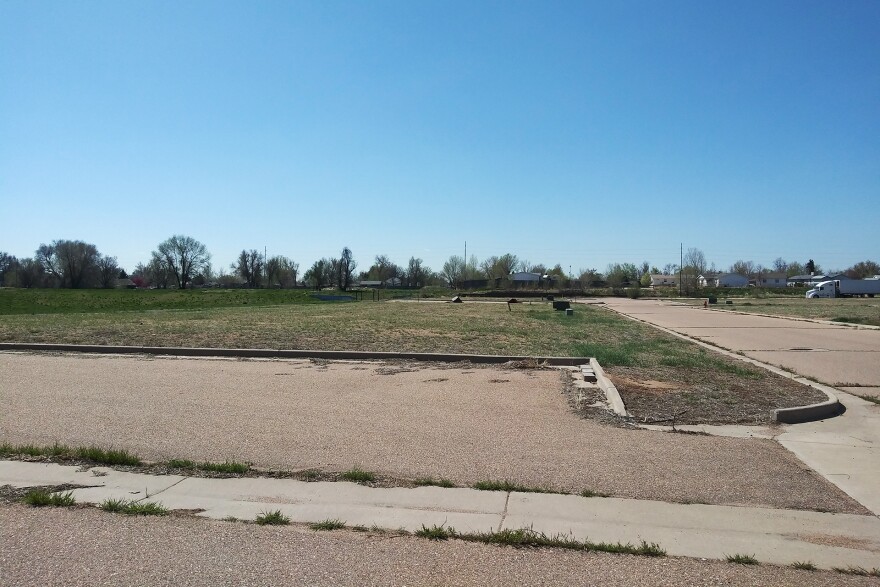When Hailee Bergstrom and her husband set out to buy their first home earlier this year, they set a budget of around $300,000. The two were renting and working in Greeley and looking to stay nearby. But the couple realized something pretty fast.
"There was no selection between what we could afford and ... I don't know," Bergstrom said, trailing off.
The couple looked at two places in Greeley. Both felt too cramped or unsafe. When they didn't find anything else in their price range, they looked south to a new development in the neighboring community of Evans.
Bergstrom said the two-story home with bright blue siding felt "very homey." It was also well within their price range. So, they bought it. In March, they moved in.
"I'm glad we got dealt this house, 'cause it's perfect for us," she said. "But it wouldn't have been our first selection."
Stories like this are increasingly common in Greeley, where the median home price is slightly above $300,000 dollars. The city's inventory of homes on the market is at the lowest it's ever been. Meanwhile, the area's job growth continues to outpace other parts of Colorado, attracting new residents while lacking the inventory to house them.
In February, the Greeley city council passed an ambitious plan to increase supply within city limits. The plan estimated the city was short about 1,100 residential units required to keep up with population growth.

The plan proposed nine housing strategies to help promote more development:
- Amend the Development Code to promote housing choice
- Minimize development costs for affordable housing
- Engage alternative housing providers to build affordable housing
- Improve the housing product mix
- Address the impact of raw water cost on housing affordability
- Complete subarea and neighborhood plans
- Create more ownership, move-up, and executive housing options
- Encourage vocational training, and apprentice programs for building trades
- Facilitate development of manufactured home communities as an important affordable housing option
The process of rolling out the plan is still in the early stages. But Benjamin Snow, director of Greeley's department of economic health and housing, knows firsthand how pressing the problem is. He moved to Greeley last fall to start his job and said he was surprised by how difficult it was to find an average-priced home.
"It was a little frustrating," he said. "You have a certain expectation of what's on the menu. And it's as if you went into a restaurant and there's only two entrees … but really you're in the mood for something that's not on the menu."
One of the first projects Snow got involved with was Greeley's new strategic housing plan. Snow said the challenge of making up the city's deficit wouldn't be easy.
"Some days it feels a little daunting, candidly," he said. "But I enjoy the challenge of it. It's really an economic puzzle to be solved."
One piece of that puzzle is attracting more developers to Greeley. They've been slow to return despite the housing market recovering from the Great Recession.
Max Moss, a Fort Collins developer, said it's just harder to turn a profit in Greeley.
"If I'm building the same 1,300 square foot, small single-family home it's gonna cost me the same money to build that lot, build those streets, build that house as it does in Fort Collins," he said. "And it sells for $100,000 more. That's the problem."
Moss has been trying to develop 450 homes on Greeley's west side for years. He was finally able to move forward with designs after the city enacted a new cash-in-lieu of water rights policy last year. The new strategic plan builds off of that type of incentive.

To get a sense of the city's plan and where it will take shape first, Snow took me to Greeley's north side. We're in the parking lot of a beige condo building. All around the building are empty fields of patchy grass.
"You can see it was designed as kind of a townhome/condo arrangement and these other phases never were built," Snow said.
That's because the developer hit unexpected costs during construction, Snow said. But the streets and parking lots are already in place and ready to go.
"So we look at parcels that were planned for housing but never completed as being the low hanging fruit that we should start exploring first to take what it would take to get those permitted and build because we're in such a hot market," Snow said.
But just making up for Greeley's existing housing deficit today won't be enough to meet demand in the future. The housing plan also states a goal of building an additional 5,000 single family units over the next five years to make way for future growth.
This story is part of an occasional series looking at the growing pains facing communities along the northern Front Range.





